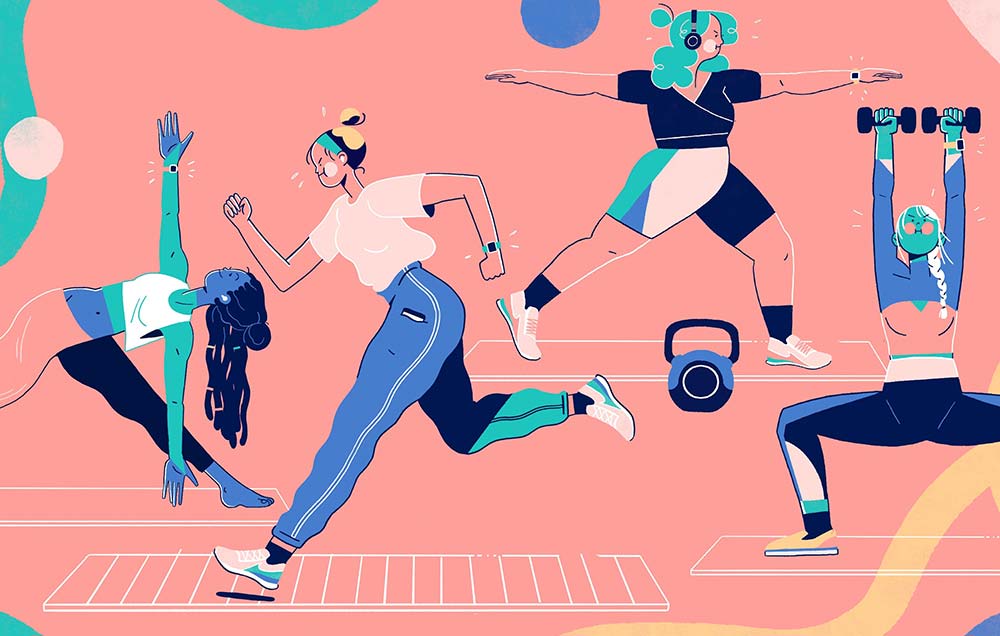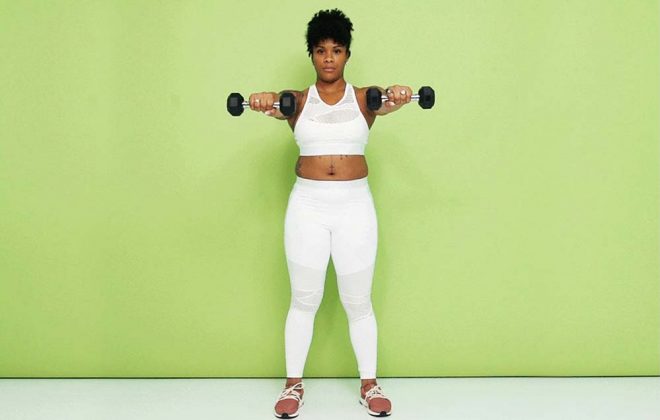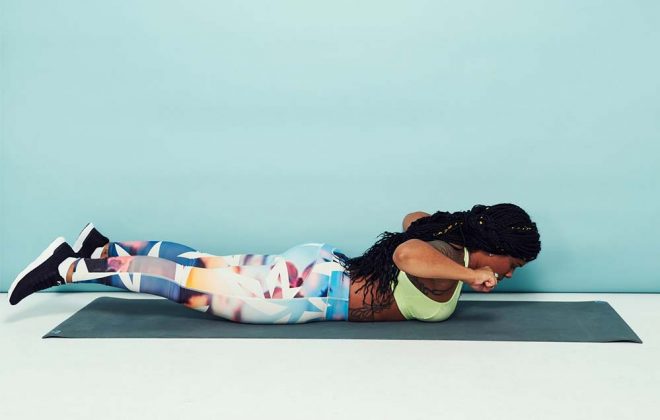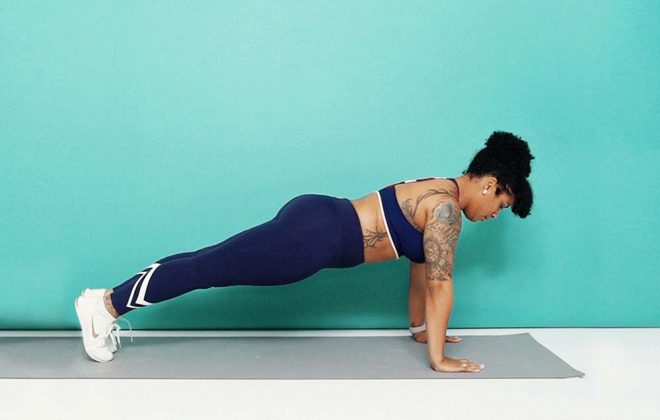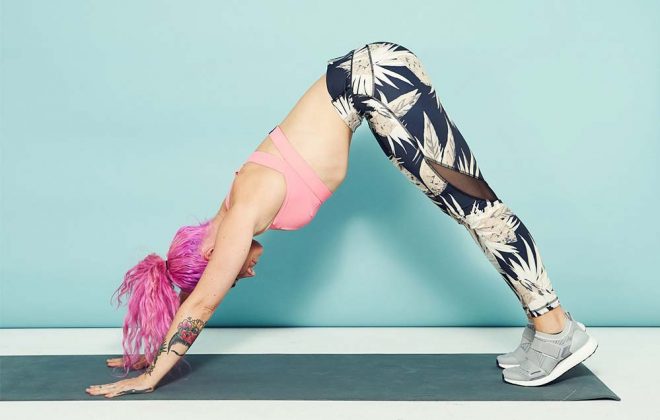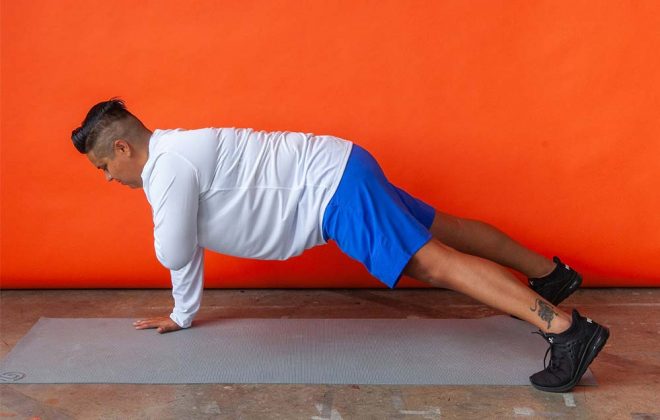
10 Ways to Build an Actually Sustainable Workout Routine You Love
One of the biggest barriers to starting (or maintaining) an exercise program has to do with something I call fitness resistance—the reluctance to welcome fitness into our lives in the form of a sustainable workout routine or program.
But I also know that engaging in regular exercise brings so many benefits—everything from improvements in self-esteem and energy to just feeling better in general—which is why I want to help people work to overcome their fitness resistance.
10 Ways to Build an Actually Sustainable Workout Routine You Love
First, it helps to determine what’s behind your “fitness resistance.”
1. Find a type of movement you enjoy.
Whether it’s weight lifting, kickboxing, yoga, or dance, finding exercise that we want to do can really influence how we think about it. When we defer to movement we don’t enjoy, our subconscious mind starts resisting before we even know it. But we file away joyful movement as a positive experience, and we want to revisit it time and time again. We no longer see this movement as a chore, and can allow ourselves to develop mastery over it.
2. Do your research.
If you had a poor past fitness experience due to the environment, seeking out a more inclusive space can be helpful (whether we’re talking in person or virtual). If you’re thinking of working with a trainer or a specific gym, ask questions beforehand to make sure your health vision is on point with the facility and trainer. Some of these may include: How do you modify programs? Have you worked with people with XYZ before? How have you helped people overcome XYZ barrier? Trainers who work primarily with advanced exercisers, like athletes, powerlifters, or physique competitors, can be intimidating for those just getting started. So you may also want to ask about their fitness speciality, or who their ideal kind of client is. There will be trainers who specialize in functional fitness for everyday people who absolutely love getting people into active living.
3. Start slowly, and progress gradually.
If you’re taking a class with difficult progressions of moves, it’s easy to feel down on yourself if you can’t keep up. Embrace exercise modifications—and don’t be afraid to ask the instructor to provide them if they’re not doing so on their own. Master moves and build good form and strength before advancing to build that confidence.
4. Build confidence at home first.
If you’re new to exercise, working out at home by yourself can help you master the moves and familiarize yourself with the process without feeling like all eyes are on you. For instance, one of my clients built a base with me online, and then felt confident enough to join a gym—and walk right into the weight pit with all the regulars.
5. Exercise in a supportive environment.
This circles back to the importance of finding an inclusive space. Even if you’re not ready for an in-person, indoor gym yet, a welcoming space is still important, whether we’re talking about an outdoor fitness class or a virtual one. Supportive instructors or other class participants can help you feel ownership in that space, which can cut down on the fear of being judged for trying to take part in it.
6. Develop a feel-good motto.
Often, fear of judgment comes from within, because we are already judging ourselves and projecting what others might be thinking. Come up with a positive motto that mentally lifts you up. I like: I belong in this space just like everyone else. I am an athlete.
7. Head out, feel the fear, and do it anyway.
You deserve to be out there. And remember, the more you do it, the easier it will become.
8. Really think about why and how past pain or injury occurred.
Could it be that you were doing more than your body was ready for? Often this is related to fear of judgment—we push harder than we should and get injured. If this is the case, it’s time to hit pause and recognize the importance of going slowly. Progress as time goes on, but only after you’ve had a good month or two without pain. Master bodyweight exercises before adding weight, and regularly check in with yourself on how your body is feeling with each session.
9. Make a warm-up non-negotiable.
I recommend warming up for at least 10 minutes. Include a range of mobility work, such as foam rolling, stretching, trigger ball work, or massage therapy.
10. Understand the difference between soreness and pain.
When we haven’t exercised for some time, we will likely get sore; this is normal (it’s called delayed-onset muscle soreness, or DOMS), and occurs from micro-tears in our muscle fibers as we put our body under demand. This usually feels like muscular fatigue, stiffness, and soreness. Sometimes people might think this is a sign that something is wrong, or that they did something wrong to cause this. But this type of soreness is nothing to be alarmed about. (On the other hand, sharp pain, throbbing, intense burning, or joint pain isn’t normal, and requires you to stop what you are doing and reassess, and possibly connect with a doctor or physical therapist.)
Digging deep into the barriers around your entry to fitness can help you understand them better—and help you work toward overcoming them. But it’s also important to recognize that sometimes these fears can be so intense that they stop us from living our lives fully and completely. In this case, connecting with a mental health professional to help you unpack these issues can also be a great option, if you’re able to see someone and don’t already. While trainers and rehab professionals can help move you through some fear by making your experience in the gym more successful and comfortable, sometimes the psychological work requires the help of a mental health professional to really take you through the process safely.

